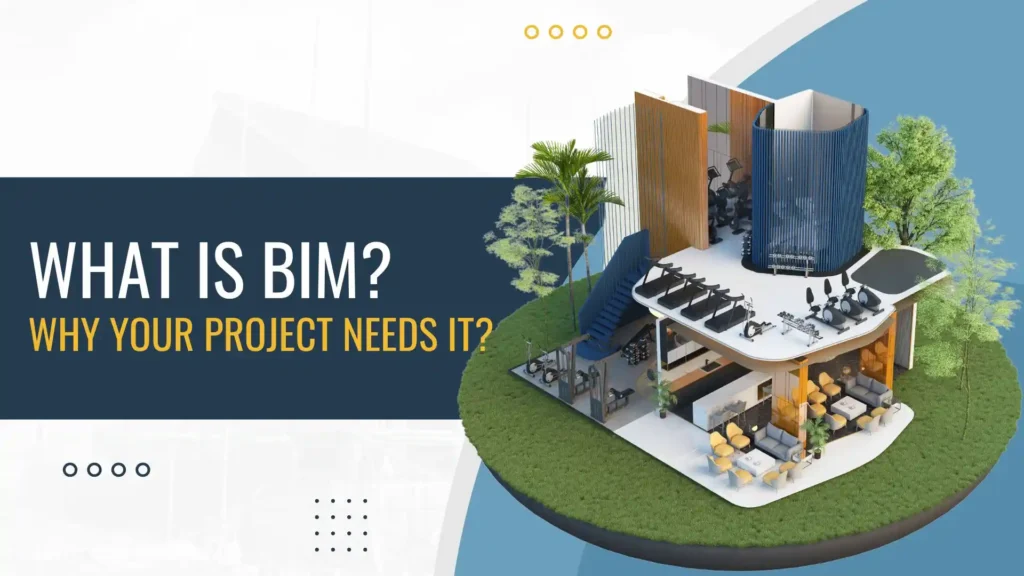
In the world of modern construction, accuracy and precision are critical. With complex designs, tight deadlines, and increasing demand for sustainable and cost-effective building practices, errors can be extremely costly. This is where Building Information Modeling (BIM) comes into play, particularly in the form of BIM Clash Detection and BIM Coordination Services. These powerful tools help construction teams identify potential conflicts in a project and streamline the coordination between different disciplines, ultimately saving time and money.
In this blog, we will explore the importance of BIM Clash Detection and BIM Coordination services and how they can significantly enhance construction efficiency.
What is BIM Clash Detection?
BIM Clash Detection is the process of identifying potential conflicts (or “clashes”) between various elements in a building’s design before construction begins. These clashes often occur when components from different disciplines, such as architecture, structural engineering, and mechanical, electrical, and plumbing (MEP) systems, intersect in ways that would not be feasible in real life.
There are three primary types of clashes detected through BIM:
- Hard Clashes: When two physical components occupy the same space, like a duct intersecting with a beam.
- Soft Clashes: When objects don’t physically collide but violate spatial tolerance, such as insufficient clearance around a pipe.
- Workflow Clashes: When scheduling or sequencing issues arise, such as two trades needing access to the same area at the same time.
By detecting these clashes early in the design phase, BIM ensures that issues can be addressed before they become costly on-site problems.
Why is Clash Detection Important?
Without clash detection, construction projects run the risk of encountering unexpected issues during the build phase, leading to costly rework, delays, and frustration among stakeholders. Here’s why clash detection is a vital part of any construction project:
-
- Prevents On-Site Errors: Clashes identified after construction begins can result in significant delays and additional costs. BIM Clash Detection helps avoid these issues by resolving them during the design stage.
- Improves Efficiency: By catching errors early, projects can run more smoothly, reducing the likelihood of costly interruptions.
- Enhances Collaboration: BIM provides a central platform for architects, engineers, and contractors to collaborate. This improves coordination and ensures that all teams are working with accurate, up-to-date information.
- Reduces Project Costs: Early detection of clashes minimizes the need for rework, change orders, and material waste, leading to significant cost savings.
How Does BIM Clash Detection Work?
BIM Clash Detection is powered by advanced software tools that analyze 3D BIM Models created during the design phase. Some of the most popular tools include Autodesk Navisworks, Solibri Model Checker, and Bentley Navigator. Here’s how the process generally works:
-
- Model Integration: Separate models from the architecture, structural engineering, and MEP teams are imported into a single shared BIM environment.
- Clash Analysis: The software scans the integrated model for conflicts, identifying any points where objects intersect or violate spatial constraints.
- Reporting Clashes: A detailed report is generated, highlighting all detected clashes. The report includes information on the location, type of clash, and suggested resolutions.
- Collaboration and Resolution: Teams collaborate to resolve the clashes, adjusting designs and making necessary changes before construction begins.
By using these advanced detection methods, the likelihood of encountering on-site issues is significantly reduced.
What is BIM Coordination?
BIM Coordination goes hand-in-hand with clash detection and involves managing and resolving any issues that arise from clashes or inconsistencies in the design. This service ensures that all project stakeholders—architects, engineers, contractors, and project managers—are aligned and working from a coordinated model.
BIM Coordination focuses on:
- Model Coordination: Ensuring that all disciplines’ models (architectural, structural, and MEP) are aligned, up-to-date, and free of conflicts.
- Collaboration: Facilitating communication between the design and construction teams, ensuring that everyone is on the same page.
- Schedule Coordination: Coordinating timelines to avoid workflow clashes, ensuring that trades can work efficiently without interference.
- Documentation: Providing clear documentation of all changes and resolutions made throughout the coordination process.
Ultimately, BIM Coordination helps ensure that the project runs smoothly, from the design phase to final construction.
The Benefits of BIM Coordination Services
BIM Coordination is essential for ensuring that all aspects of a construction project are synchronized and conflict-free. Some of the major benefits of using BIM Coordination services include:
-
- Improved Communication: BIM Coordination serves as a central hub for communication, keeping all project stakeholders informed and aligned on the project’s progress.
- Faster Project Delivery: By coordinating schedules and resolving potential issues early, BIM Coordination helps reduce delays and speeds up project completion.
- Reduced Rework: Coordinating models ensures that potential clashes are identified and resolved early, reducing the likelihood of expensive rework once construction is underway.
- Better Quality Control: With continuous updates and checks, BIM Coordination ensures that the final product aligns with the original design intent, enhancing the overall quality of the build.
BIM Clash Detection and Coordination in Practice
The real power of BIM Clash Detection and Coordination services comes into play when applied to real-world projects. For example, in large-scale infrastructure projects or complex commercial buildings, clashes between MEP systems and structural elements are common. Without clash detection, these conflicts can go unnoticed until they become critical issues during construction.
In one example, a commercial building project in Boston, Massachusetts, was able to save thousands of dollars by using BIM Clash Detection to identify several conflicts between the HVAC and structural systems during the design phase. These issues were resolved before construction began, avoiding potential delays and costly rework.
BIM Coordination further ensured that the project timeline was streamlined, with all teams working from the same updated model. As a result, the project was completed ahead of schedule and within budget.
Why You Should Invest in BIM Clash Detection and Coordination Services
For construction firms, developers, and architects, investing in BIM Clash Detection and Coordination services is a smart choice. Not only do these services save time and money, but they also lead to better project outcomes. By reducing errors, improving collaboration, and enhancing overall project efficiency, BIM plays a crucial role in delivering successful construction projects.
In a competitive construction market like Boston, where complex projects and tight deadlines are the norm, adopting BIM Clash Detection and Coordination services can give your firm the edge it needs to stand out.
Conclusion
BIM Clash Detection and BIM Coordination services are essential tools for any modern construction project. By identifying and resolving conflicts early in the design phase, these services minimize errors, reduce rework, and improve overall project efficiency. Whether you’re working on a small residential building or a large-scale commercial development, BIM can help ensure your project is delivered on time, within budget, and to the highest quality standards.
If your construction project is based in Boston, Massachusetts, or anywhere in the USA, embracing BIM is the first step toward more efficient, cost-effective, and collaborative construction practices.


